Strategy July 24, 2019
Big Ideas In The Promo Products Industry For 2019
These pressing developments will transform your short- and long-term thinking.
Blockchain Will Change Everything
Even if you don’t know what it is or how it works, by now you’re probably familiar with the term “blockchain,” especially after the price of bitcoin skyrocketed in late 2017. And while many people believe those two things are the same, blockchain is actually the process behind how bitcoin and other cryptocurrencies operate. Blockchain has all sorts of potential applications, from real estate to medical records to digital voting and much more.

For the promotional products industry, blockchain (essentially a decentralized ledger operating on a cloud-based platform, as opposed to a central company or platform that controls how information is collected or stored) can have a major impact on sourcing and trade. Multinational enterprises will be able to leverage blockchain applications to reduce costs, improve transparency and enhance security along their supply chains. Translation: cheaper sourcing that’s easily trackable and verifiable. Here’s how blockchain could improve existing supply chains:
Transparency & Visibility: The blockchain ledger will include key information about who has custody of the goods and where they are. These networks will most likely be private and limited to invited participants like the buyer, seller and shipper, thus ensuring the confidentiality of the transaction.
Authenticity & Verification: These are especially important for cross-border trading where the buyer and seller will need to verify the contents of shipments for purposes of customs and tariffs. It will ensure documentation cannot be duplicated, altered or falsified.
Trade Finance: There’s a $1.6 trillion gap in trade finance, which disproportionately affects small businesses. Blockchain can ease that gap and speed up transactions; one such deal involving a dairy producer in Ireland reportedly took less than 24 hours instead of the standard 7- 10 days.
Added Financial Security: Blockchain can build smart contracts that automatically execute when certain preconditions are met. These self-executing legal instruments could potentially eliminate some of the counterparty risk of nonpayment and nonperformance by guaranteeing payment when the goods are delivered. – Patrick Gleeson
Recession-Proof Your Sales Right Now!
This July marks the longest period of expansion on record for the U.S. economy. A recession will come sooner or later, and distributors need to take steps now to protect themselves when it inevitably happens. We’ve asked industry veterans and sales experts to share their tips on how to prepare for the worst.

Strengthen the Pipeline
Danny Friedman, president of Chicago-based Danny Inc., has been a distributor for 23 years. The only time in his career that he was scared was the global recession of 2008. “I remember telling my wife we have to be prepared that I’ll make 25% of what I usually make,” he says.
Friedman immediately went back to basics: prospecting and networking. “You need to not only solidify relationships with your current client base, but also be proactive and fill the pipeline with as many clients as possible,” Friedman says.
Ask the Right Questions
It has almost become cliché, but distributors need to be more than order takers. “I often hear my team on the phone and nobody is asking the right questions,” says Howard Clubberly, general manager at Goldstar (asi/73295). “We’re too busy, we’re just taking orders. But to understand the customer better, you have to ask the right questions to expand your business.”
Clubberly suggests asking how the product is being used, what the advertising objective is and how it fits into the overall product branding strategy, among other deeper questions, to learn more ways you can service the client.
Focus on Repeat Business
Gary Austin, owner of Gary Austin Advertising (asi/127581) and ThePenGuy.com, has weathered two recessions: the Great Recession in the late 2000s and the dot-com bubble burst at the beginning of that decade. Thanks to offering affordable promotional products, Austin says his business actually improved during the economic downturns.
“Right now, I’d be going for the smaller ticket items that have a history of good repeat business, such as pens and calendars.” Austin says. “I wouldn’t be pushing high-end items unless, of course, they fall in your lap.”
Work With Supplier Partners
You don’t have to go it alone during tough times. Work with your supplier partners to develop ways that benefit you, them and your customers. For example, Paula Gossett, senior promotional consultant at Top 40 distributor Geiger (asi/202900), has a large financial client that purchases 400,000 pens a year. Gossett has partnered with a supplier for an inventory program in which every three months, they produce and ship 100,000 pens to the customer. “If you trust your supplier, it’s a great way to reduce cost,” Gossett says.
Diversify Your Client Base
A recession can actually be good for you if you play your cards right, according to Linda Neumann, president of San Diego-based Brilliant Marketing Ideas (asi/146083). “When the economy tanks and people lose their jobs, they start businesses,” Neumann says. “Then they need advertising and promotions, so they come to you.” Neumann also suggests looking for opportunities in industries you’re not currently selling in, finding ways you can help struggling businesses. “If other distributors aren’t doing that, then you’ve just gained market share,” she says. – John Corrigan
Industry Leaders Peer Into Their Crystal Balls
In honor of Counselor magazine’s 65th anniversary, industry leaders were asked to offer their vision of the next 5-10 years for the promotional products industry. A selection of their responses are printed here; to see the full version with predictions from 10 leaders, visit bit.ly/PromoPredictions – Michele Bell
Jana Miller Schmidt
CEO of Harland Clarke (asi/219943)
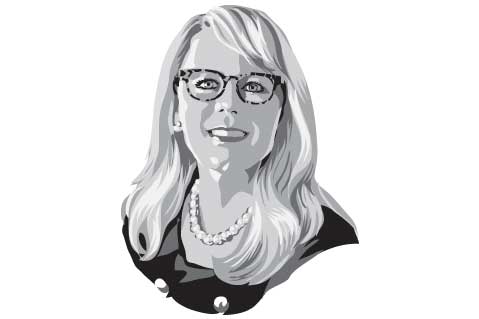
“It’s all about customer experience. We’ll definitely see consolidation continue with the need to provide a personalized, frictionless experience to businesses as clients seek to promote their brands. There’s separation between having an e-commerce presence and truly building the online buying experience. Creating the best online purchasing and follow-up experience will keep customers coming back. Industry players will look to acquire companies that either extend their capabilities or give them more scale.”
Carleen Gray
CEO of Stahls’(asi/88984)
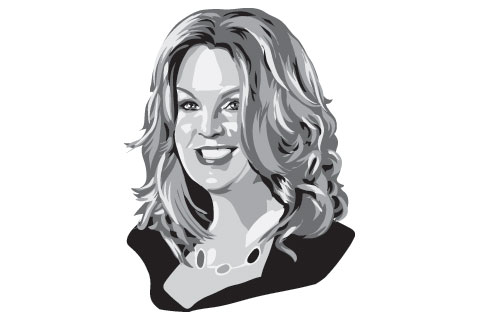
“Simple quick-turn, one-off print personalization methods have shifted the decades-old order of operations – from design, print (massive quantities), ship and sell to design, sell, print (as needed), then ship. Mass-produced pre-prints will become a thing of the past and the concept of zero-inventory on-demand manufacturing and post embellishment will grow. More on-site capabilities, including heat-print technology, will continue to increase.”
Marc Simon
President/CEO of HALO Branded Solutions (asi/356000)
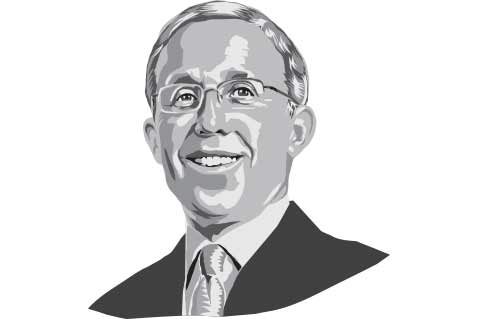
“Technology will drive every aspect of the industry in the next 10 years. Buyers will require more robust and more diverse methods to select and purchase products, and follow their orders throughout the order life cycle. Technology will drive consolidation for both distributors and suppliers because the only way to benefit from the necessary investment in technology will be greater scale. Our industry must keep pace with the enhanced buying experience other channels are providing to stay relevant.”
Mark Freed
President/CEO of Genumark (asi/204588)

“I see continuous growth from the large online players that provide a fast, painless, accessible solution for clients looking for simple, inexpensive drop-shipping. I also see continuous growth and consolidation for multifaceted large distributors providing a suite of features that meet a variety of complex requirements for sophisticated clients, which could be related to logistics and fulfillment, quality and compliance, off-the-charts creativity and relentless customer service. There will still be a place for smaller, boutique-size distributors, but they better have a niche like specialized knowledge of the client’s industry or unbelievably innovative ideas because it’ll be difficult to offset the advantages of buying power enjoyed by larger competitors.”
Yes, You Can Sell Sustainable Apparel
Sustainability has been a buzzword for a while now, but interest in the topic has been on the rise with consumers, particularly younger shoppers. For instance, 90% of millennials are more likely to buy from and recommend a brand whose social and environmental practices they trust, according to marketing firm The Shelton Group. Last year, online searches for sustainable apparel were way up, with fashion site Lyst reporting a 47% increase in shoppers using terms like “vegan leather” and “organic cotton” in their queries. Plus, the popularity of minimalism and Marie Kondo-inspired purges have prompted people to look more critically at their overstuffed closets.
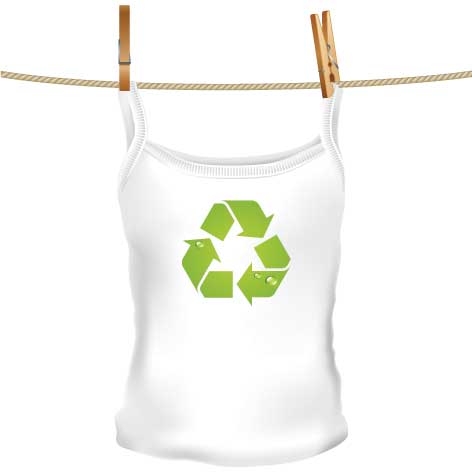
That’s all well and good, but as soon as distributors bring up the idea to customers, they often run up against a familiar roadblock: price. “Everybody will tell you, ‘Yes, I’d rather buy a product that’s eco-friendly,’” says Chris Fox, vice president of corporate social responsibility at Hanesbrands (asi/59528). “Still, the question is, especially across the mainstream: Are they voting with their pocketbook? That’s still TBD.”
How can you handle the price objection and still do well for the planet? Here are two easy tips:
Reframe the Discussion Around Price: For clients already willing to spend a little more for a high-quality garment, says Denise Taschereau, co-founder and CEO of Fairware (asi/191452), it’s easy enough to shift the conversation to something organic or recycled, since there won’t be much of a price difference. In fact, adds Kriya Stevens, marketing manager for econscious (asi/51656), there are times when conventional brands, particularly ones with fashion-forward styles, cost more than her company’s organic tees.
Highlight the Environmental Cost: A sustainability club at a university in the northeast needed to purchase a few hundred T-shirts and initially decided to go with a 50/50 blend name-brand shirt. Instead of taking no for an answer, a decorator worked with Allmade Apparel (asi/34341) and used the company’s impact calculator (impact.allmade.com) to calculate how many gallons of water the club would save and how many recycled plastic bottles would be used. “They didn’t know how wasteful fashion was,” says Ryan Moor, CEO of screen-printing supply company Ryonet and co-founder of Allmade. “They changed their order.” – Theresa Hegel
Know the Law
Significant changes affecting workers are on tap at the federal level, and owners and sales managers need to be aware of them. Here’s what’s on the docket.

Extending Overtime Eligibility
The Department of Labor has proposed extending the amount of Americans eligible for overtime benefits to 1.2 million workers, lifting the salary limit from $23,000 to $35,000.
It’s an alternative to the rule passed by the Obama administration in 2016, in which 4 million workers were supposed to receive overtime eligibility as the salary limit jumped to $47,000.
However, many employers retaliated against that particular legislation, arguing that such a dramatic rise in overtime costs would destroy businesses. Twenty-one states successfully sued the federal government to overturn the rule, claiming the Department of Labor was imposing unnecessary costs and abusing its power in violation of the Tenth Amendment.
If the Trump administration’s rule passes, expect some companies to either convert salaried employees to hourly workers or lift employees’ base pay to the new threshold to avoid paying overtime.
Minimum Wage Hikes
Over the past few years, six states have passed legislation to raise the minimum wage to $15 an hour. Democrats serving in Congress would like to see those changes for every state.
The Raise the Wage Act of 2019 would eventually double the federal minimum wage – which has been stuck at $7.25 for the past decade – by 2024. The law would also tie future changes to the minimum wage based on changes to median workers’ pay, according to the Economic Policy Institute. In addition, the lower minimum wage for tipped workers (which has been $2.13 since 1991) would be raised until it reaches the regular minimum wage.
Democrat leaders say the increase would not only help workers keep up with the rising costs of living, but also boost the economy by giving employees more money to spend. Conversely, Republican leaders argue that the law would hurt small-business owners by increasing costs, forcing them to cut staff, trim workers’ hours and rapidly shift toward automation.
Online Sales Tax Goes Into Effect
Last summer, the Supreme Court ruled that states can now force internet retailers to collect sales taxes in states where they have no physical presence. More than a dozen states began collecting following the ruling, and this year, Georgia, Iowa, Louisiana, Nebraska, Utah and California joined the list, according to the Tax Foundation.
The effect on distributors in the promotional products industry will vary. Local companies will have a more level playing field when dealing with online competitors. Meanwhile, companies will now have to potentially know the sales tax laws of every state, file sales tax forms for every state and be registered to do business in every state.
Paid Sick Leave Expansion
Although there are no federal laws that require employers to provide paid sick leave for their employees, there is a growing trend of state and local governments stepping in. Currently, 11 states have paid sick leave mandates: Arizona, California, Connecticut, Maryland, Massachusetts, Michigan, New Jersey, Oregon, Rhode Island, Vermont and Washington.
Of that list, Michigan just joined, requiring covered employers (entities employing 50 or more individuals) to provide eligible employees an opportunity to accrue paid medical leave at the rate of at least one hour of leave for every 35 hours worked, for up to 40 hours per benefit year. The cities of San Antonio and Austin, TX, are expected to follow suit this year.
In terms of competition, having mandated paid sick leave puts companies on an even playing field. However, it also could hurt small businesses that can’t afford to provide such benefits to its staff. – John Corrigan
One Big Thing
Advantages staffers share the overlooked sales tactics that are the difference between success and failure.
Sara Lavenduski
Senior Editor

Tailored Value Propositions: It’s important not only to craft a concise, clear value proposition, but also tailor it to the individual prospect’s needs and then continue to reiterate it when they become clients. Customers must know what the distributor is able to offer – it’s how you can differentiate yourself in a commoditized industry.
C.J. Mittica
Editor-in-Chief

Packaging: We preach about quality relentlessly. But do you know what can add pop to any promo? High-end packaging. It instantly raises perceptions and consistently wows the recipient. Next time you spend hours researching the product, just devote a little of that time to the right packaging and your efforts will be rewarded handsomely.
Joe Haley
Product Editor
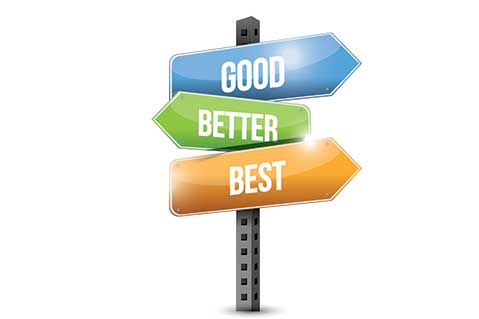
Upsell: Don’t pitch products; pitch options. Present the product the client asked for, but use the Good/Better/Best method to include two other styles or models that represent a better version and a best version. More often the client will opt for the better version and the distributor increases their profit.
